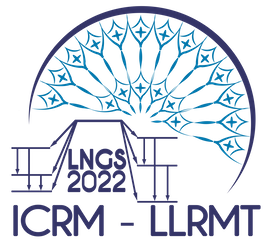Speaker
Description
Measurements of radioactivity in fresh food are generally carried out in case of post nuclear accidents. In this case, only simple machining technique such as cutting, grinding is required for the sample preparation. For example, radioactivity monitoring for food has been reinforced since the Fukushima daiichi NPP accident and still carried out with such a sample preparation procedure. In such a case, heterogeneity of radioactivity in a sample could cause variation of detection efficiency in gamma-ray spectrometry resulting in large error or uncertainty. In order to clarify this impact, we demonstrated uncertainty estimation with a semi-empirical approach. Several authors have been evaluated the uncertainty of quantities relevant in gamma-ray spectrometry by Monte Carlo propagation (e.g. Kaminski, 2013, Sima, 2016). In our study for the assessment of these uncertainties, which lead to uncertainties in the efficiency determination, uncertainties of efficiencies were calculated for heterogeneous food samples by use of the uncertainty estimator (IUE) of the commercially available software ISOCS based on Monte Carlo simulation. A 100 ml cylindrical container that was used in the routine measurement was employed for the simulation. In the present simulation radioactive matrix virtually filled in the container was divided into 10 layers of 5 mm thickness circular plane. To set distribution of radioactivity in each layer for the calculation, measured data by use of real 15 samples of 10 kinds of wild mushrooms cultivated in Fukushima were used for more realistic evaluation. Each of them was minced and dried, then relative distribution of radioactivity was determined from activity in each unit mass obtained by a gamma counter. Rectangular distributions were adopted in the present simulation. The maximum and minimum values of each distribution were set to the highest and lowest activity concentrations obtained from the real measurements. As for the detector part of the present simulation Ge detector model having 4 different sizes (45, 50, 70 and 90 mm in diameters) of Ge crystal models was used. The source was virtually placed directly onto the detector, and the counting efficiencies and their uncertainties were calculated. As a result, relative standard uncertainties arising from the heterogeneity of radio-cesium, which could be negligible for an ideal uniform sample, calculated to be 1 % or less for the mushroom sample having RSD of 5 % of radioactivity distribution. On the other hand, a sample with RSD of 35 %, the uncertainty was estimated to be 6.5 % in the case of using a minimum size of the detector. In the present paper we represent the results of measurements for the relative distribution of radioactivity in some other kind of real food samples and their impacts on the uncertainty. In addition, more simplified uncertainty calculation method using a house-made calculation sheet based on MS Excel was carried out as another practical approach. In this method, individual efficiencies of each layer having 5 mm thickness circular planes in a container were experimentally determined by a series of reference source measurements, which had 5 mm thickness of radioactive matrix filled in the same container, with 10 different source-to-detector distances (0-45 mm). Uncertainty due to heterogeneity was obtainable also with this simple approach.

